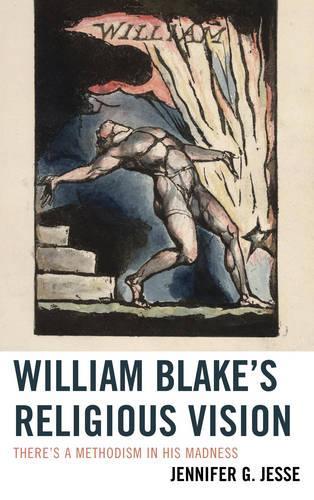
William Blake's Religious Vision: There's a Methodism in His Madness
(Paperback)
Publishing Details
William Blake's Religious Vision: There's a Methodism in His Madness
By (Author) Jennifer Jesse
Bloomsbury Publishing PLC
Lexington Books
25th February 2015
United States
Classifications
Professional and Scholarly
Non Fiction
Literary studies: c 1800 to c 1900
821.7
Physical Properties
Paperback
312
Width 153mm, Height 228mm, Spine 23mm
454g
Description
In this innovative study, Jesse challenges the prevailing view of Blake as an antinomian and describes him as a theological moderate who defended an evangelical faith akin to the Methodism of John Wesley. She arrives at this conclusion by contextualizing Blakes works not only within Methodism, but in relation to other religious groups he addressed in his art, including the Established Church, deism, and radical religions. Further, she analyzes his works by sorting out the theological road signs he directed to each audience. This approach reveals Blake engaging each faction through its most prized beliefs, manipulating its own doctrines through visual and verbal guide-posts designed to communicate specifically with that group. She argues that, once we collate Blakes messages to his intended audiencessounding radical to the conservatives and conservative to the radicalswe find him advocating a system that would have been recognized by his contemporaries as Wesleyan in orientation. This thesis also relies on an accurate understanding of eighteenth-century Methodism: Jesse underscores the empirical rationalism pervading Wesleys theology, highlighting differences between Methodism as practiced and as publicly caricatured. Undergirding this project is Jesses call for more rigorous attention to the dramatic character of Blakes works. She notes that scholars still typically use phrases like Blake says or Blake believes, followed by some claim made by a Blakean character, without negotiating the complex narrative dynamics that might enable us to understand the rhetorical purposes of that statement, as heard by Blakes respective audiences. Jesse maintains we must expect to find reflections in Blakes works of all the theologies he engaged. The question is: what was he doing with them, and why In order to divine what Blake meant to communicate, we must explore how those he targeted would have perceived his arguments. Jesse concludes that by analyzing the dramatic character of Blakes works theologically through this wide-angled, audience-oriented approach, we see him orchestrating a grand rapprochement of the extreme theologies of his day into a unified vision that integrates faith and reason.
Reviews
[T]his is an interesting and provocative book. Jesse has opened up important and unexpected areas of inquiry that are likely to yield a greater understanding of Blakes polyphonic work in a heterogeneous religious milieu. * Blake/An Illustrated Quarterly *
Jennifer Jesse has written an accessible introduction to William Blake. It encompasses an admirable assembly of critical learning and acumen, assessing the achievement of several generations of Blake scholars. The book will be a reference point for all those seeking a profound consideration of issues related to Blakes work and its contexts. -- Robert W. Rix, assistant professor, Department of Culture and Global Studies, University of Aalborg
Author Bio
Jennifer G. Jesse is professor of philosophy and religion at Truman State University. Her specialties include faith and reason in Christian thought, Blake studies, religion and literature, religion and science, interdisciplinary theory, and liberal religious thought in America. She has published numerous articles and essays in these areas. She holds a doctorate in religion and literature from the University of Chicago Divinity School, and is past editor of the American Journal of Theology and Philosophy.
